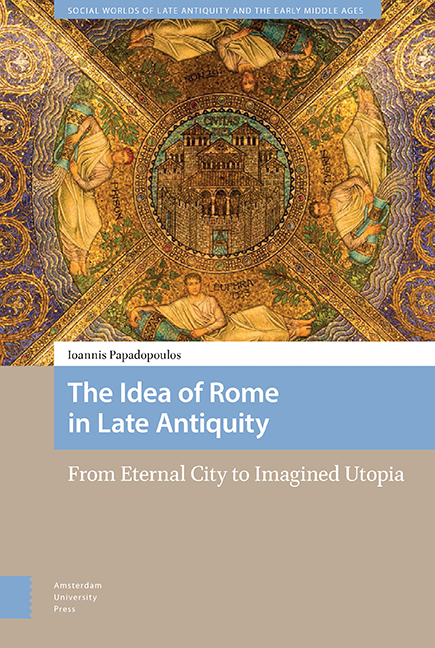Book contents
- Frontmatter
- Dedication
- Contents
- Introduction: Between a Physical and an Imaginary City
- I Looking Backwards: Ordo Renascendi
- II The Adventus of Constantius
- III Between Rome and Athens: The Artificial Romanitas of Julian
- IV Between the Altar and the Court: Symmachus and Claudian in Action
- V Between Christ and a Roman Place: The Emergence of Christian Rome in Time and Space
- VI Between Jerusalem and Babylon: The Archetype of Rome in the City of God
- Conclusions: From Rome to Eternity
- Bibliography
- Index
II - The Adventus of Constantius
Published online by Cambridge University Press: 11 November 2021
- Frontmatter
- Dedication
- Contents
- Introduction: Between a Physical and an Imaginary City
- I Looking Backwards: Ordo Renascendi
- II The Adventus of Constantius
- III Between Rome and Athens: The Artificial Romanitas of Julian
- IV Between the Altar and the Court: Symmachus and Claudian in Action
- V Between Christ and a Roman Place: The Emergence of Christian Rome in Time and Space
- VI Between Jerusalem and Babylon: The Archetype of Rome in the City of God
- Conclusions: From Rome to Eternity
- Bibliography
- Index
Summary
In order to understand the interaction between the symbolic landscape of Rome and individuals such as the emperor Constantius II during his visit (357), we must turn our attention to the changes that occurred in the city in the decades prior to the event. Changes that implied a paradigm shift in what the public space at Rome and especially the Forum Romanum symbolized for the authorities (both civic and imperial) and the populus. The material expression of the tetrarchic ideology contributed to the forging of a new urban profile via a new architectural language that honoured the past by connecting contemporary individuals to the city's ancestral traditions and institutions, thus redefining late Roman public history. To a fourth-century eyewitness who was unfamiliar to the landscape of the eternal city (as many fourth century emperors), a walk in the imperial fora would have given the impression that he was walking and gazing at the same landscape as Augustus or Trajan would have encountered. This would be an incorrect impression since the area in and around the historic centre of the city had witnessed significant alterations and interventions during the third and early fourth centuries AD.
Every time there was a repair or restoration/preservation project, the image of the city centre inevitably changed in a process of re-contextualization, as happened, for example, during the reign of Septimius Severus, who aimed to promote an Augustan public profile for his regime by attempting, after the fire of 191, to restore the forum to an artificial pristine condition that mirrored what it would have looked like two centuries earlier. The next milestone would be the period of the Tetrarchy, when Diocletian and Maximian (286-305) sought to set their achievements and their new political theology in stone at the heart of the Roman capital and adjust the public space to their autocratic standards.
On the occasion of the joint imperial visit of 303, the area of the Augustan rostra was reworked with the addition of five columns above the orators’ platform, towered over by five statues dedicated to the tetrarchs and Jupiter. The same frame was applied to the eastern rostra with the addition of another set of five columns with a similar appearance and function, signifying the principle of the collegialitas between the Augusti and the Caesares.
- Type
- Chapter
- Information
- The Idea of Rome in Late AntiquityFrom Eternal City to Imagined Utopia, pp. 67 - 86Publisher: Amsterdam University PressPrint publication year: 2021



